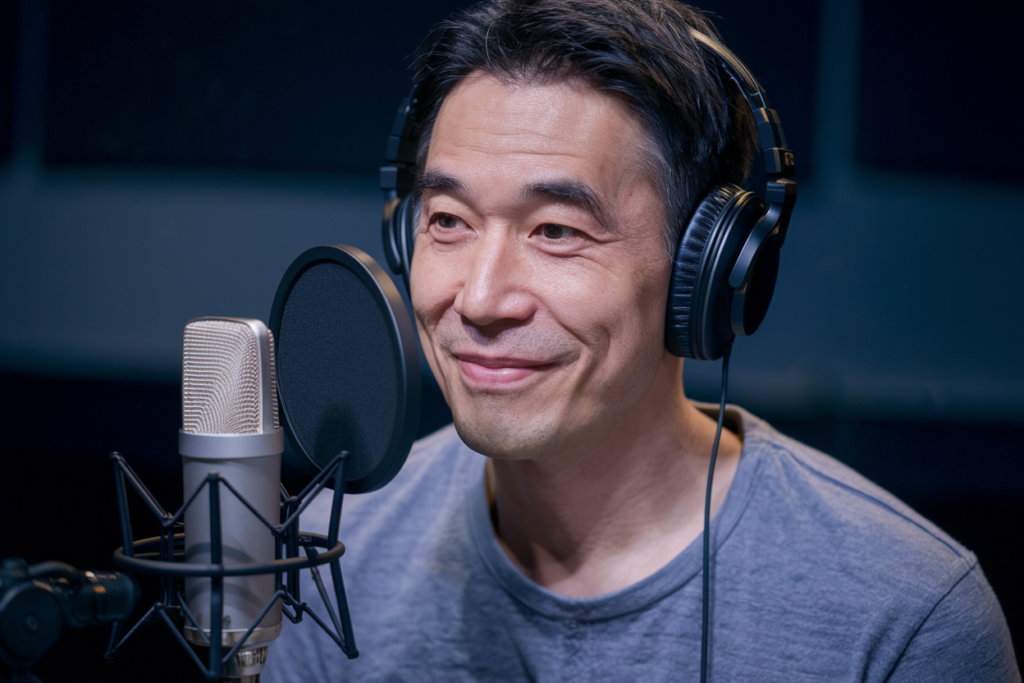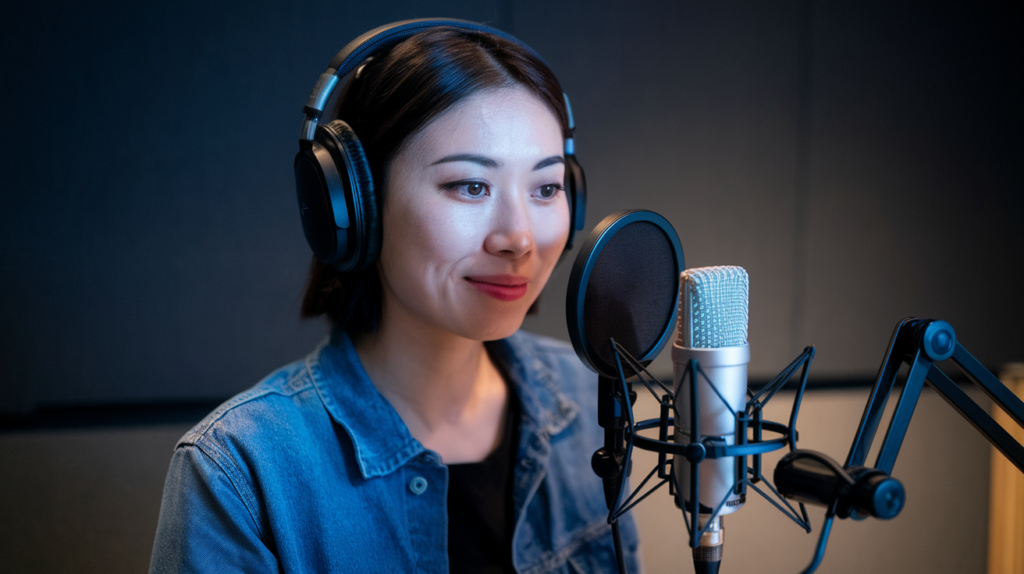Key Takeaways
- Understanding Localization: Japanese video localization involves adapting content for international audiences while maintaining the original essence through translation, cultural adjustments, and dubbing.
- Role of Quality Voice Acting: Selecting skilled voice actors is crucial to enhancing character portrayal and emotional depth, ensuring that viewers can connect with characters authentically.
- Challenges in Dubbing: Effective localization faces challenges such as translating idioms, matching voice talent to character personalities, and synchronizing audio with video for seamless viewer experience.
- Cultural Nuances Matter: It’s essential to adapt humor and maintain cultural nuances during dubbing to ensure that voiceovers resonate with target audiences without losing the charm of the original content.
- Essential Tools and Software: Utilizing audio editing software like Adobe Audition or Audacity and collaboration platforms streamlines the dubbing process and ensures quality outcomes.
- Best Practices for Success: Implementing thorough casting processes, quality assurance measures, and testing sessions enhances the overall impact of localized content on diverse audiences.
Ever wondered how your favorite Japanese shows sound so captivating in English? The secret often lies in effective video localization and dubbing. If you’re looking to break into this fascinating world or improve your existing skills, you’ve come to the right place.
Overview of Japanese Video Localization
Japanese video localization involves adapting content to resonate with international audiences while preserving the original’s essence. This process includes translation, cultural adjustments, and dubbing or voiceover work.
Importance of Localization
Localization plays a crucial role in making Japanese media accessible and appealing to global viewers. It enhances engagement by ensuring that dialogue sounds natural and culturally relevant. Quality voiceovers by skilled voice actors can elevate the viewing experience, allowing audiences to connect with characters and stories on a deeper level. Without effective localization, nuances may be lost, leaving viewers puzzled rather than entertained.
Challenges in Localization
Several challenges arise during the localization process. First, translating idiomatic expressions often requires creative solutions so that jokes or cultural references make sense in the target language. Second, matching voice talent to character personalities demands careful consideration; not every actor fits every role perfectly. Third, timing poses a challenge—synchronizing lip movements with translated dialogue ensures seamless integration into scenes. Navigating these challenges is essential for achieving high-quality localized content that resonates with your audience.
Understanding Dubbing Techniques
Dubbing involves several key techniques to ensure a seamless experience for viewers. By focusing on voice acting and syncing audio with video, you can appreciate the intricacies that make localization successful.
Voice Acting in Dubbing
Voice acting plays a crucial role in dubbing. Selecting the right voice actor enhances character portrayal and emotional depth. A talented voice artist not only matches the original character’s personality but also brings unique nuances that resonate with an audience. Consider how different voices convey various emotions; a joyful tone can uplift scenes, while a somber one might evoke deeper feelings. The goal is to maintain authenticity, allowing viewers to connect with the characters as if they were hearing them speak in their native language all along.
Syncing Audio with Video
Syncing audio with video is vital for creating believable interactions between characters. Proper synchronization ensures that dialogue aligns perfectly with lip movements, enhancing immersion for viewers. When audio cues match visual elements seamlessly, it creates an engaging experience where audiences focus on storytelling instead of noticing discrepancies in timing or pacing. This technique requires attention to detail and often involves adjusting dialogue delivery speed or editing sound bites for optimal fit within scenes. When executed well, this meticulous process amplifies viewer enjoyment and deepens connections to the content.
Cultural Considerations in Dubbing
Cultural context plays a vital role in successful dubbing. Understanding these nuances ensures that your voiceovers resonate with the target audience.
Adapting Humor and References
Humor often relies on cultural references, which may not translate directly. You might need to adapt jokes or references to fit the local culture while retaining their essence. For instance, a pun that works well in Japanese may fall flat in English. Think about replacing it with humor that’s relatable to your audience without losing the original’s charm. Engaging voice talent skilled in comedic timing can help bring this adapted humor to life effectively, enhancing viewer enjoyment.
Maintaining Cultural Nuances
Cultural nuances shape how audiences perceive characters and stories. When dubbing, it’s crucial to maintain these subtleties for authenticity. This includes recognizing social norms, traditions, and emotional expressions unique to Japanese culture. Your chosen voice actor should embody these traits convincingly through tone and delivery. For example, nuanced emotions like subtle sadness or joy require careful attention from the voice artist to ensure they align with character intentions and resonate with viewers’ experiences.
Incorporating these cultural considerations into your dubbing process not only enhances the quality of localized content but also deepens connections between characters and audiences across different cultures.
Tools and Software for Video Dubbing
Selecting the right tools and software is essential for effective video dubbing. These resources streamline the process, ensuring quality voiceovers that resonate with audiences.
Popular Audio Editing Software
Audio editing software plays a crucial role in enhancing voiceovers. Here are some popular options:
- Adobe Audition: This industry-standard tool offers advanced editing features, effects, and multi-track capabilities. It allows you to craft polished audio seamlessly.
- Audacity: A free, open-source option that’s user-friendly. It’s great for basic edits and has enough features to meet most dubbing needs.
- Reaper: Known for its flexibility, Reaper supports various plugins and formats, making it suitable for both beginners and professionals.
- Pro Tools: This high-end software is favored by many studios. It provides powerful editing tools but may have a steeper learning curve.
These programs help ensure your audio aligns perfectly with video content, capturing the essence of each scene.
Dubbing Platforms and Services
Dubbing platforms facilitate collaboration between voice actors and production teams. Consider these types of services:
- Online Marketplaces: Websites where you can find freelance voice talent from around the world. You can browse profiles based on experience, language skills, or specific genres.
- Cloud-Based Solutions: These platforms allow real-time collaboration among team members regardless of location. They offer integrated tools for recording, editing, and syncing audio effortlessly.
- Specialized Dubbing Services: Companies focusing solely on dubbing provide comprehensive solutions including casting, direction, and post-production support.
Using these platforms helps simplify logistics while connecting you with skilled voice artists who bring characters to life through their performances.
Best Practices for Effective Dubbing
Effective dubbing requires careful consideration and attention to detail. You’ll find that following best practices can elevate the quality of your localized content significantly.
Casting the Right Voice Actors
Casting the right voice actors is crucial for achieving authentic character portrayals. You need to select voice talent who not only match the characters’ personalities but also understand cultural nuances. Look for voice artists with a diverse skill set, as this versatility often leads to more engaging performances. For instance, if a character exhibits humor or emotional depth, choose a voice actor who can convey these traits convincingly. Conduct auditions to hear how different talents interpret roles before making your decision. Engaging experienced professionals familiar with dubbing will enhance the overall impact of your project.
Quality Assurance and Testing
Quality assurance ensures that every aspect of your dubbing meets high standards. Start by reviewing recordings against video footage for synchronization accuracy; dialogue should align seamlessly with lip movements. After initial edits, conduct thorough testing sessions with various audience groups representing your target demographic. Gather feedback on aspects like clarity, emotional authenticity, and cultural relevance from viewers familiar with both languages and cultures involved in the content’s creation.
Implement any necessary adjustments based on this feedback before finalizing the product. This process helps address potential issues early on while ensuring voiceovers resonate well with audiences and maintain engagement throughout their viewing experience.
By focusing on casting skilled voice actors and implementing rigorous quality assurance measures, you create an immersive experience that captivates viewers across different cultures—making your Japanese video localization efforts truly effective.
Conclusion
Mastering Japanese video localization and dubbing is essential for creating engaging content that resonates with international audiences. By understanding the nuances of language and culture you can enhance viewer experiences and deepen emotional connections with characters.
Investing in quality voice talent and utilizing effective tools will elevate your projects significantly. Remember to focus on cultural context as it plays a crucial role in how humor and emotions translate across languages.
With attention to detail and dedication to best practices you’ll be well on your way to producing captivating localized content that truly reflects the essence of the original material while appealing to diverse viewers. Embrace this exciting field and let your creativity shine through every voiceover!
Frequently Asked Questions
What is video localization?
Video localization is the process of adapting video content for international audiences. It involves translating dialogue, adjusting cultural references, and ensuring voice work resonates with viewers while maintaining the original essence of the material.
How does dubbing enhance Japanese shows in English?
Dubbing enhances Japanese shows by providing high-quality voiceovers that align with character emotions and actions. This allows English-speaking audiences to connect more deeply with characters, making the viewing experience immersive and engaging.
What are some challenges in video localization?
Challenges include accurately translating idiomatic expressions, matching voice talent to character personalities, and synchronizing dialogue with lip movements. Each aspect requires careful attention to maintain quality and ensure viewer enjoyment.
Why is cultural understanding important in dubbing?
Cultural understanding is crucial because humor and references may not translate directly between languages. Adapting these elements ensures that localized content resonates authentically with the target audience.
What tools are essential for effective video dubbing?
Key tools include audio editing software like Adobe Audition, Audacity, Reaper, and Pro Tools. These help enhance voiceovers and ensure audio synchronization with video content during the dubbing process.
How can creators find skilled voice actors for dubbing?
Creators can find skilled voice actors through online marketplaces for freelance talent or specialized dubbing services. These platforms facilitate collaboration between production teams and talented artists who bring characters to life effectively.
What best practices should be followed in dubbing?
Best practices include casting voice actors who match character personalities, conducting auditions for emotional depth, ensuring thorough quality assurance checks on recordings, and gathering diverse audience feedback for clarity and relevance.







